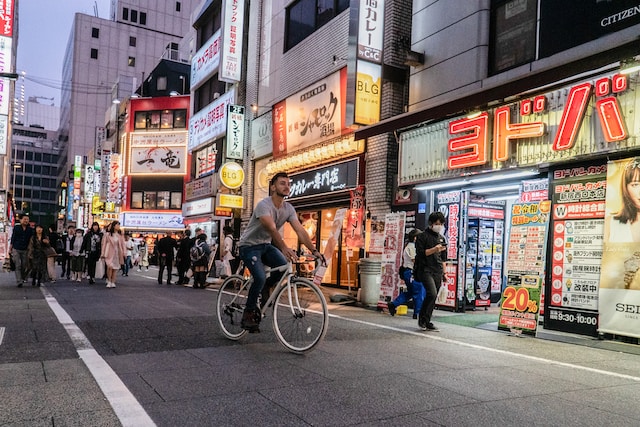Welcome to the world of bicycle Japan! From daily commuting to rugged trails and urban exploration, bicycles offer a delightful mode of transport in Japan. Whether you’re new to biking or an experienced enthusiast, this guide will lead you through every aspect of bicycle usage in Japan, including regulations, types, and purchasing tips.
Biking in Japan: An Introduction to Practical Insights
Navigating Japan by bike is relatively safe, with local traffic regulations that ensure cyclist’s safety. Moreover, the bike theft rate is relatively low, and you can have peace of mind when parking in public spaces. However, there are challenges like the scarcity of dedicated bicycle lanes in certain areas. A special bag called Rinkou Bukuro (輪行袋) is required for carrying bikes on trains, but paid parking lots near train stations and low theft rates make biking accessible.
From Tokyo’s crowded streets to Kyoto’s beautiful pathways, bicycles offer a unique way to explore Japan. Enjoy the freedom to navigate at your own pace and stop whenever you wish. Biking transcends utility and becomes a fashion item, serving diverse purposes like daily commuting, camping, racing, and even traveling.
Japanese Bicycle Regulations: What You Need to Know
- No License Required: Accessible to all.
- No Age Restrictions: Suitable for families, even parents with children.
- Helmets Not Mandatory: Recommended, but not legally required.
- Registration Required: After buying, register your bike at the local police station.
- Various Riding Locations Allowed: Roads, designated paths, and sometimes sidewalks.
- Parking Considerations: Avoid nuisance parking; find legal spots easily.
- 60 km/h Speed Limit on Roads: Faster than mopeds!
Your Guide to Buying a Bicycle in Japan
Explore various types:
- City Bicycles (including Mama-Chari): For daily commuting, errands, and short distances, as low as JPY 30,000.
- Sport Bikes: Including:
- Mountain Bikes: For rugged trail adventures.
- Road Bikes: Lightweight and aerodynamic, ideal for racing.
- Cross Bikes: Blending road and mountain bikes’ features, versatile for commuting or off-road riding.
- Electric Bicycles: Best for uphill terrains or long distances, available at higher cost.

What’s Mama-Chari?
Mama-Chari is the most common type of bicycle in Japan. They’re designed for a stable ride, perfect for getting around town. What’s interesting is that they can also carry 1 to 2 small children.

That’s convenient! But why are they called Mama-Chari?


Great question! Bicycle in Japan started as heavy-duty transportation solutions, but in the late 1950s, they were redesigned with women in mind. That’s how they got the name Mama-Chari, which means “Moms’ bike.” Over time, they’ve become more lightweight and affordable, and you’ll often see them with removable baskets.
Where to Buy Your Bicycle in Japan
Choose between specialized bicycle shops, big retailers like Aeon, or renting options. Specialized stores may cost more but offer better support and maintenance.
Renting Options in Japan: For the Occasional Rider
Options include rental shops in tourist areas, and bike sharing services. Bike sharing is rapidly growing in major cities, letting you rent and return bicycles from designated spots. Docomo Bike Share pioneered the concept, offering plans starting at 150 yen for 30 minutes. COGICOGI offers 2100 yen for half-day and HELLO CYCLING provides a nationwide service with flexible station search and multiple bike reservations. Enjoy cycling on demand!
Conclusion
Bicycle Japan is about more than getting from point A to B; it’s a cultural experience and a way to see Japan anew. With this guide, you’re equipped to buy, use, and enjoy your bicycle in Japan. Happy cycling!
Helpful Resources:
